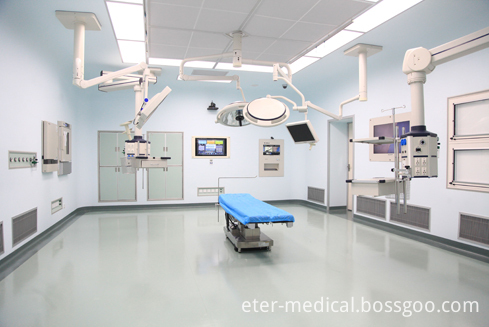Precise quantitative culture of super-high yield of rice plastic tray
1. Variety selection: The early-maturing late rice variety Wuyunjing No. 7 was selected. 2. Seeding and seedling cultivation: Each mu of farmland needs 60 plastic trays of 352 holes, and about 17 square meters of seedbeds are needed. Every 90 kilograms of nutritious soil is mixed with 0.5 kilograms of strong agent. On May 12-13, the seeds were soaked with imidacloprid, chlorpheniroxazole, and bacterin, and the amount of seed per acre of field was 1.5 kg. Seeds are sown after dew. When sowing, first spread two-thirds of the nutritious soil in the holes of the plastic tray, sow 1 pellet per hole, fill the soil with a cover after sowing, and transfer the tray into the paddy field. 3, Putian management: Before the emergence of seedlings cover the film, and wet irrigation. Look at the seedling color to cut off the milk fertilizer, and it is generally not necessary to cut off the milk fertilizer in the Putian where strong Zanthoxylum is used. Pay attention to pest control and control rice stripe disease. One day before transplanting, 8.5 grams of urea was applied to each tray. When fertilizing, there should be no accumulation of water. 4. Transplanting in a timely manner: June 5-6, 20-23 days of age, leaf age of 4-4.5 leaves, and 1.2 lines per plant. The line will be planted at a fixed point, spacing 30 cm, plant spacing 20 cm, 1.11 per acre. Million points, 1 seedling per hole. 5. Fertilizer operation: After calculation, the total amount of pure nitrogen per mu is 17.5 kg. According to the ratio of N, P and K fertilizers of 1:0.5:0.7, the total amount of phosphorus pentoxide is 8.8 kg per mu and the total amount of potassium oxide per mu is 12.3 kg. The proportion of nitrogen fertilizer application was the base fertilizer and panicle fertilizer, and the base fertilizer and tiller fertilizer was 7:3. Phosphorus fertilizer is used as a base fertilizer for one time. The basic application of potash fertilizer and the jointing stage (down-leaf 4 leaf stage) applied each half. Combined with site preparation of base fertilizer, applied fertilizer of three yuan per mu, 38 kg, 30 kg of superphosphate. After 7 days of transplanting, fertilizer was applied to the plant and 5.5 kg of urea was applied per acre. Inverted 3.5 leaf stage (14 leaf stage) to promote flower fertilizer, apply 10 kg of urea per mu, potassium chloride 10.5 kg, 10 kg of silicon fertilizer. Inverted 1.5 leaf stage (16 leaf stage) to protect flower fertilizer, urea 9.5 kg per acre. 6, water slurry management: 7 days after transplanting horse water irrigation to keep the field moist. 7 days after transplanting till the critical leaf age, 1 leaf stage (10.5 leaf stage, enough seedlings 80%) for effective tilling, shallow water irrigation, water depth 2-3 cm, and seedlings exposed 1-2 times. From the 10.5 leaf stage to the remainder of the leaf age of 2 (15 leaves spread), the field is divided and the field is lightly weighted first. Starting from the 10.5 leaf stage, the field is well established. The field is well-opened and the ditch is 20 centimeters deep. The level of the field is not cracked and the foot is not horizontal; every three to five days, it is reloaded once, and the level of the field is “windâ€. Blowing rice leaf ring, leaf spiked palm, field surface white root, not white in the middle "is degree. 15 leaf flat development to heading shallow water ground irrigation 25 days, mainly in shallow water layer and wet irrigation. After 25 days from heading to maturity, wet irrigation was the main method, and the roots were preserved. 7, pest control and weed control: Putian stage focus on the prevention and control of rice stripe disease, with Saijin, fast killing Ling Mixture control of planthopper. 10-15 days after transplanting, 1 package of fine rice straw was used for chemical weeding per acre. During the Honda period, it will focus on the control of Daphnia mauritiana, S. huaihuai, S. huaihuai, C. medinalis, rice planthopper and sheath blight. Heading stage focuses on controlling rice blast and rice smut.
Cleaning Engineering For Hospital
The
medical clean engineering system covers clean operating rooms, ICUs,
disinfecting supply rooms, laboratories, clinical laboratories, vein
deployment centers and other sites. Decoration materials, clean
air-conditioners and medical devices that meet the cleanliness
requirements must be adopted to ensure cleanliness, especially for clean
operating rooms, ICUs, disinfecting supply rooms and other sites
subject to cleanliness requirements of the hospital.
Cleaning Engineering For Hospital Cleaning Engineering For Hospital,Environmental Services Hospital,Clean Operation Theatre Engineering,Medical Air-Cleaning Engineering Hunan Eter Medical Co., Ltd. , https://www.eter-tech.com